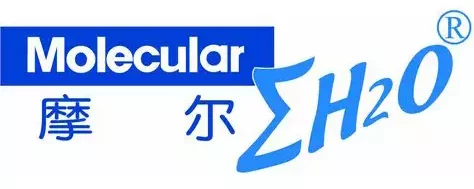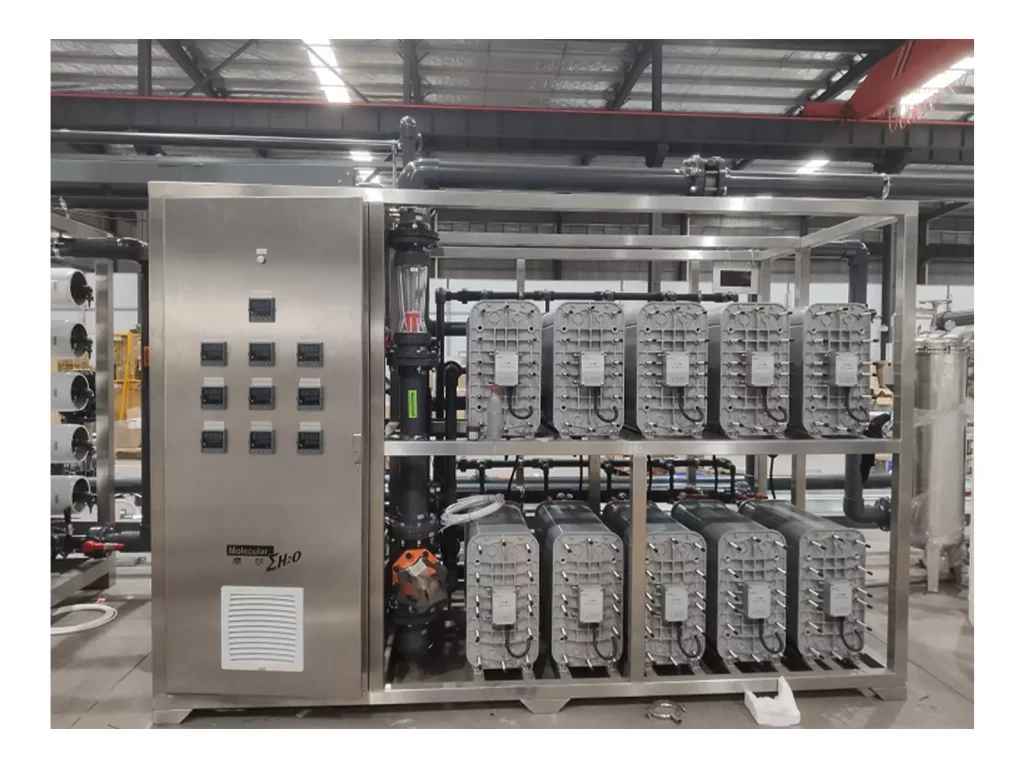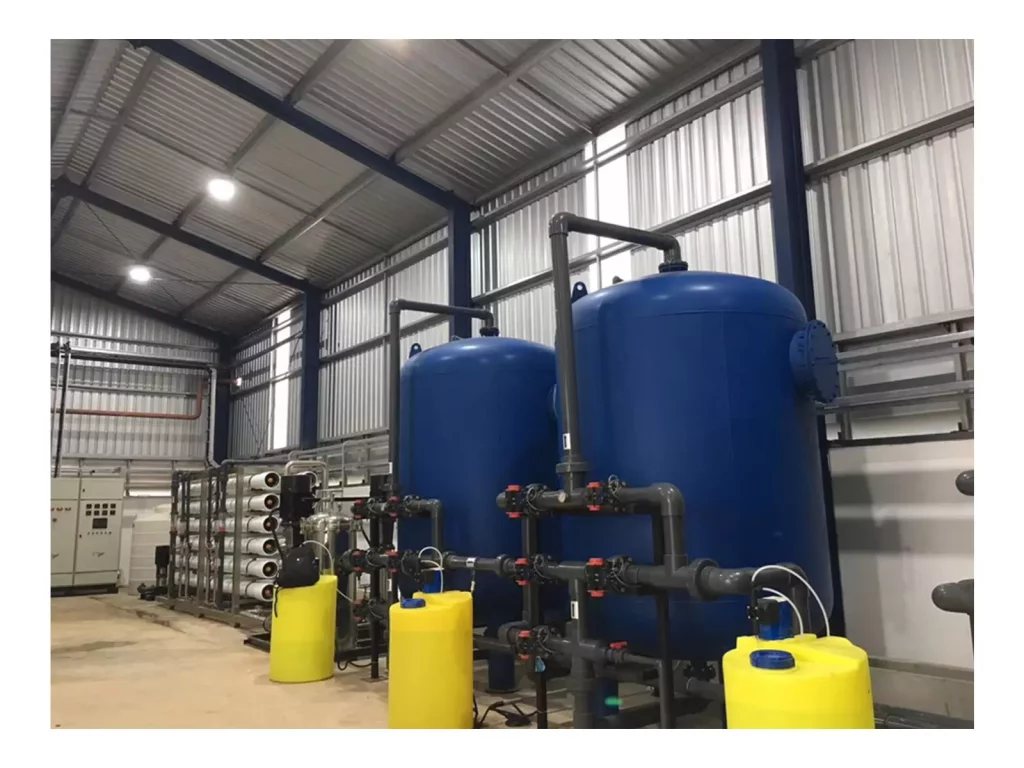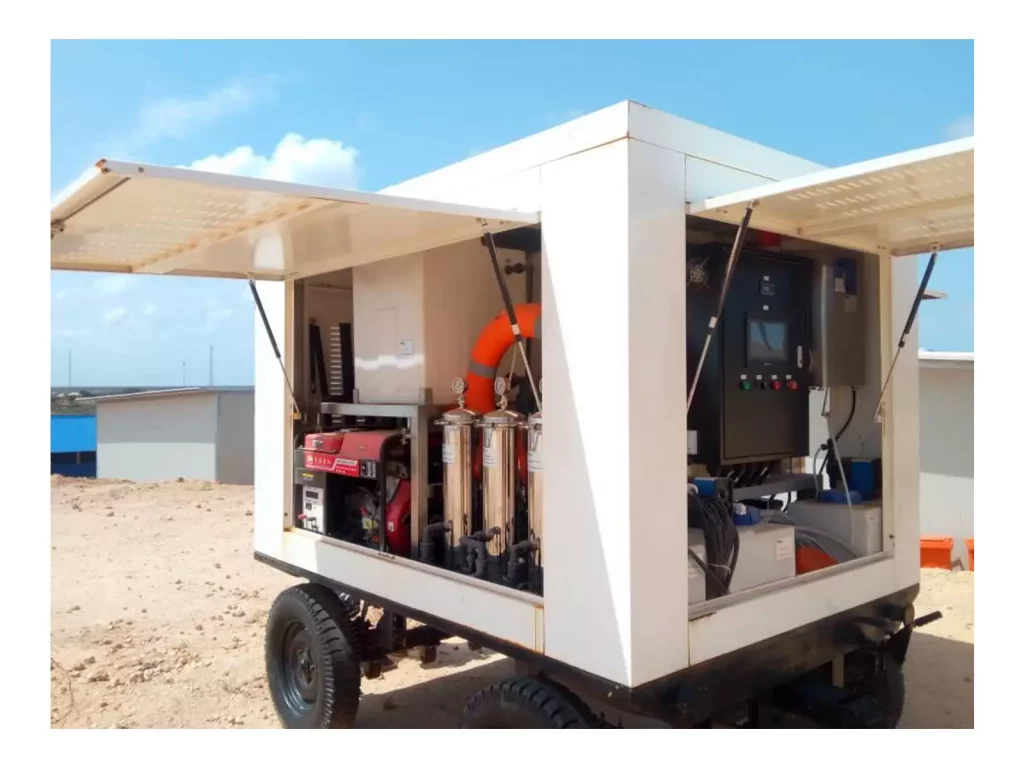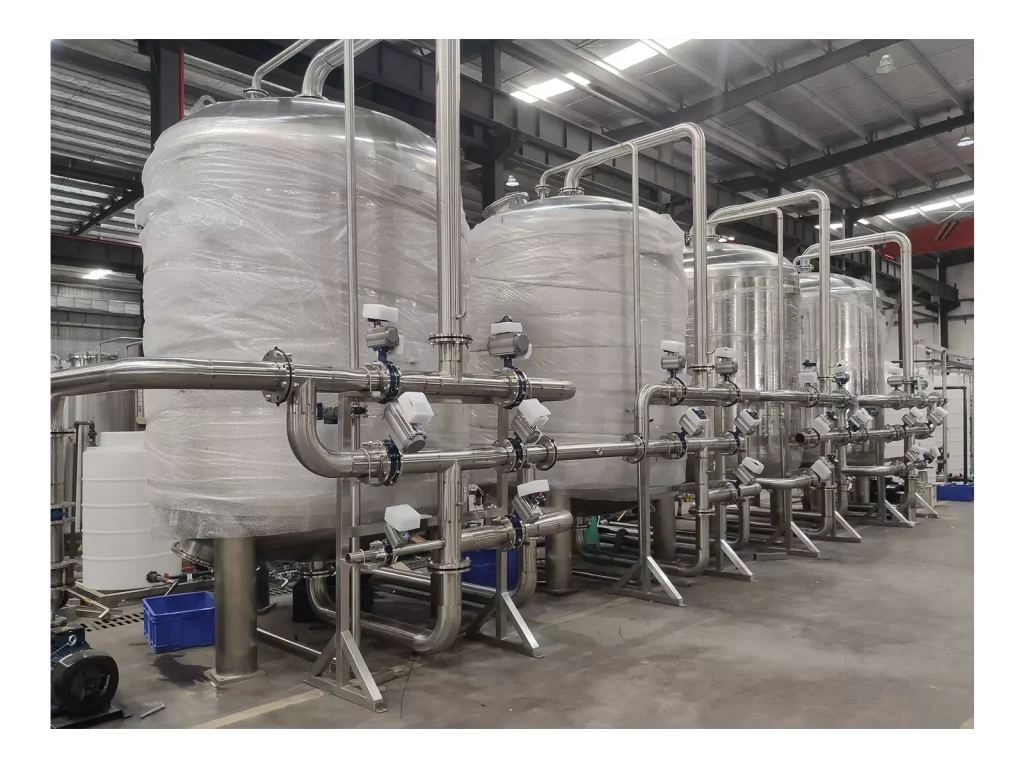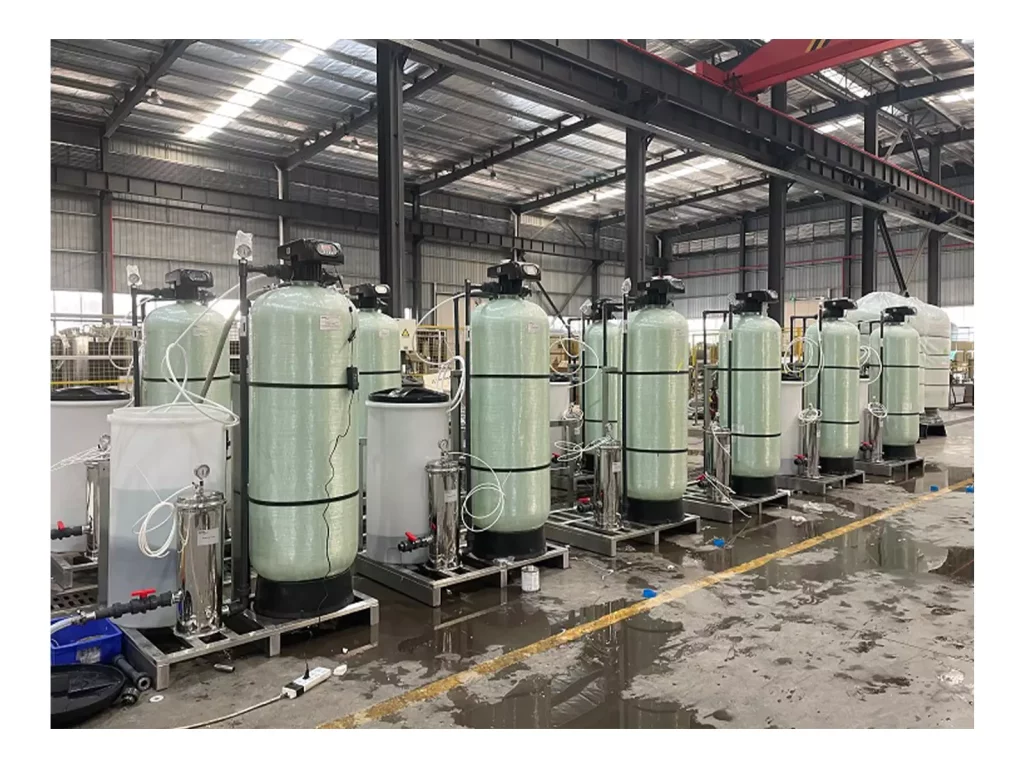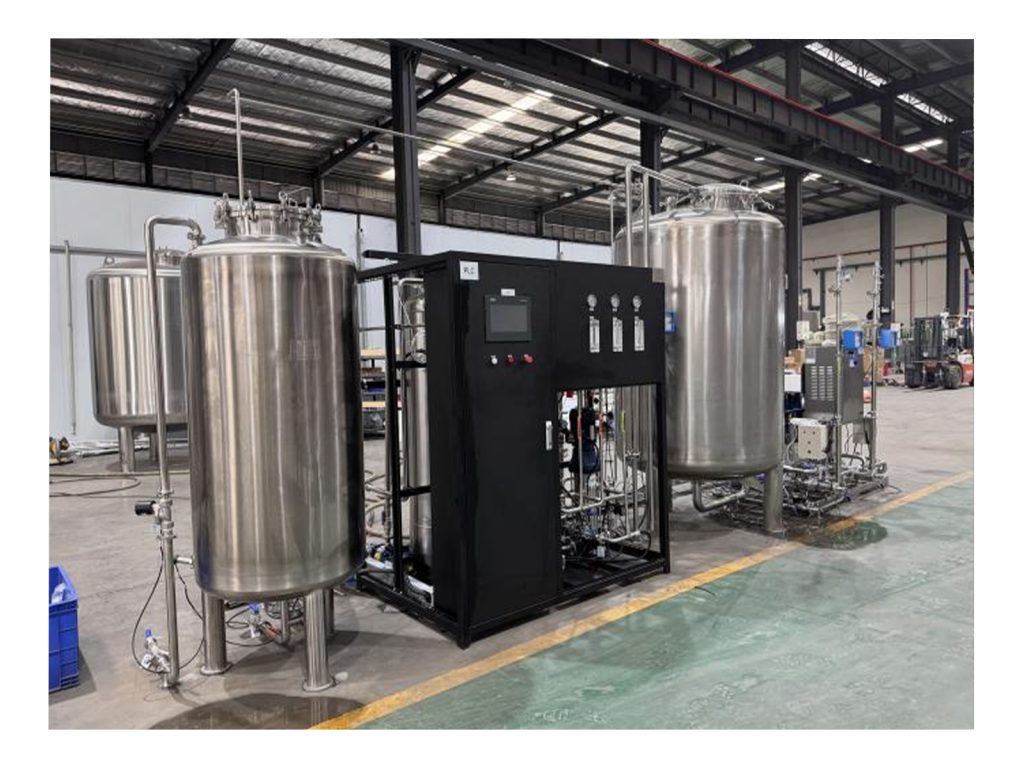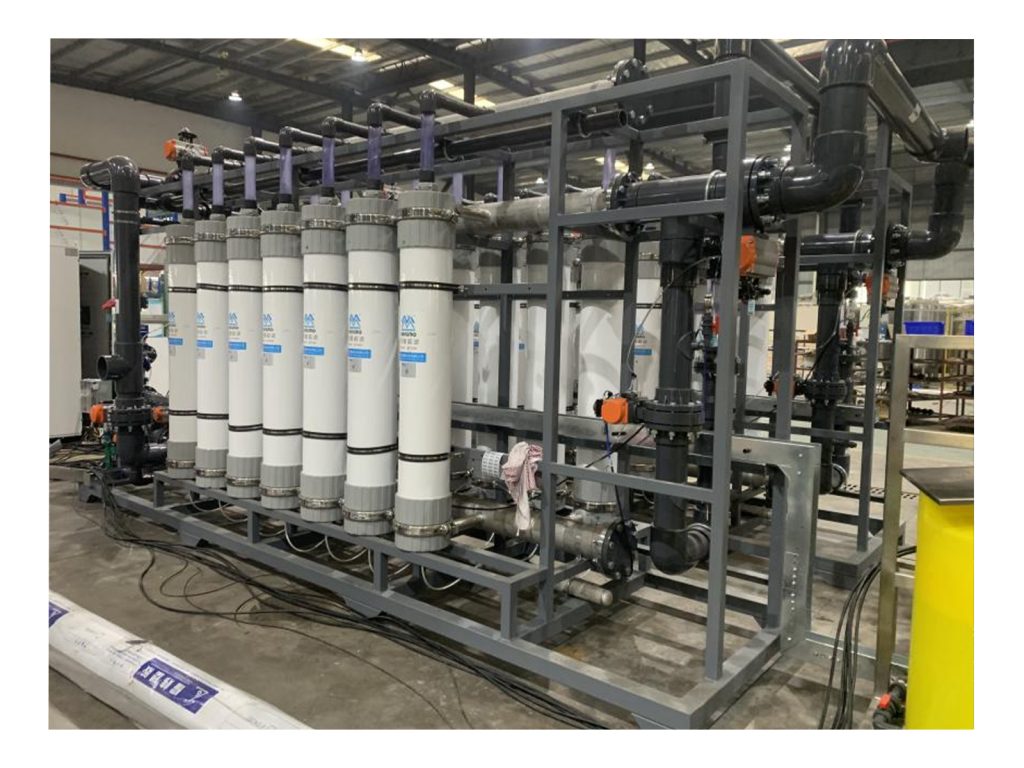With the shortage of water resources and the increasing requirements for water quality, modern water treatment technologies are receiving more and more attention. Among various membrane separation technologies, nanofiltration has become an important choice in fields such as drinking water and industrial water due to its unique filtration capacity and energy-saving characteristics.
However, many people still have doubts about nanofiltration: What exactly is it? How does it work? Can water hardness be removed? Is softening treatment required before use? This article will comprehensively analyze the principle, application and practical precautions of nanofiltration, providing you with a clear reference.
What Is Nanofiltration?
Nanofiltration is a membrane separation technology that lies between ultrafiltration and reverse osmosis. Its membrane pore size is approximately 1 nanometer, and it can selectively remove some dissolved salts, small-molecule organic substances, and some hardness ions in water. Compared with ultrafiltration, nanofiltration can remove smaller particles and ions. Compared with reverse osmosis, nanofiltration retains some minerals while removing impurities, making it more energy-efficient.
The core features of nanofiltration include:
- Selective filtration: It can remove some salts and organic matter while retaining some minerals beneficial to the human body.
- Pressure-driven: By applying external pressure, water molecules pass through the membrane while blocking larger solutes.
- Energy conservation and environmental protection: Compared with full reverse osmosis, it consumes less energy and is suitable for large-scale water treatment applications.
By understanding the definition and characteristics of nanofiltration, readers can initially recognize its value and application scope in water treatment.
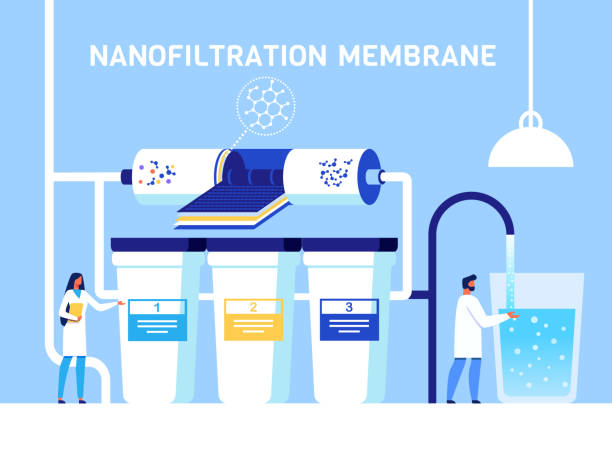
How Does Nanofiltration Work?
The working principle of nanofiltration mainly relies on the selective permeability of the membrane and the pressure-driven mechanism. Under the action of external pressure, water passes through the nanofiltration membrane. Water molecules can pass through smoothly, while macromolecular impurities, some salts and hardness ions are blocked outside the membrane.
The removal mechanism of nanofiltration membranes includes two aspects:
- Physical interception: The membrane pore size is smaller than the particle size of impurities, preventing large molecules and suspended solids from passing through.
- Electrostatic repulsion: The membrane surface becomes charged, generating a repulsive force on charged ions, thereby enhancing the removal effect.
Through these two mechanisms, nanofiltration can not only improve water quality but also increase the hardness and mineral content of water conservation to a certain extent.
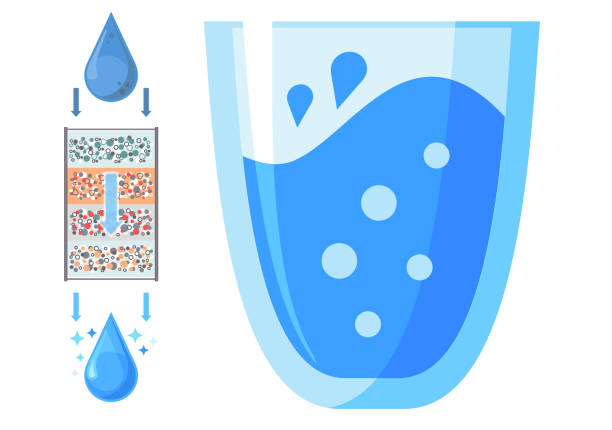
What Is Nanofiltration In Water Treatment?
Nanofiltration technology is widely applied in the field of water treatment, mainly including the following aspects:
- Drinking water purification: Remove tiny impurities, organic matter and some heavy metals in water, while retaining minerals, making the water quality safer and healthier.
- Industrial water treatment: such as in the food and beverage industry, electronics industry, boiler water, etc. By removing some dissolved salts and hardness, it ensures the quality of equipment and products.
- Water softening: In hard water areas, nanofiltration can partially reduce water hardness, slow down scaling problems, and extend the service life of equipment.
Therefore, nanofiltration is not only applicable to household and commercial drinking water systems, but also plays a significant role in the field of industrial water treatment.
Does Nanofiltration Remove Water Hardness?
Water hardness is mainly caused by calcium and magnesium ions. Excessively high hardness can lead to pipe scaling, equipment wear and tear, and a decrease in washing efficiency. Nanofiltration’s ability to remove water hardness lies between that of softeners and reverse osmosis. It can partially remove calcium and magnesium ions, but usually cannot completely soften water.
Specifically, for water of medium hardness, nanofiltration can effectively reduce hardness and improve water quality. However, in a high-hardness water environment, relying solely on nanofiltration may not meet the requirements, so it is necessary to combine other pretreatment measures to protect the membrane system.
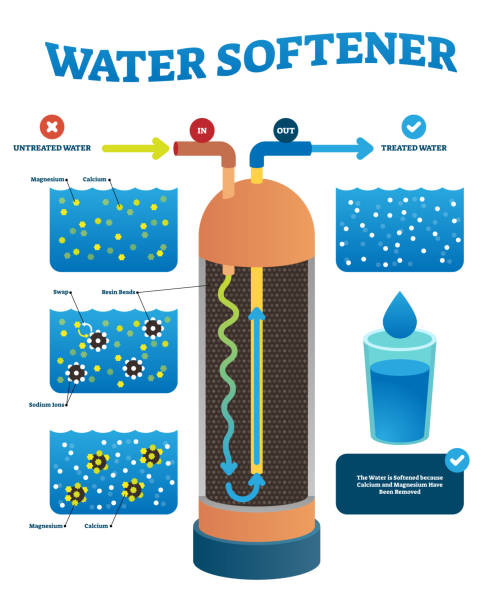
Does Nanofiltration Require Softener Pretreatment?
Due to the fact that nanofiltration membranes are still sensitive to hardness ions, if high-hardness water is directly treated, membrane scaling is likely to occur, reducing the membrane’s lifespan and treatment efficiency. Therefore, in hard water areas, it is usually recommended to carry out pretreatment before softening.
The functions of softening pretreatment include:
- Reduce the concentration of calcium and magnesium ions to lower the risk of membrane scaling
- Improve the stability and lifespan of the nanofiltration system
- Ensure the continuous stability of the effluent quality
Through appropriate pretreatment, nanofiltration can perform at its best and achieve long-term efficient operation.
The Advantages And Limitations Of Nanofiltration
Advantages
- Energy-saving and highly efficient, with a large water treatment capacity
- Partial desalination while retaining minerals
- It has a wide range of applications and takes into account both drinking water and industrial water
Limitations
- Hardness cannot be completely removed
- It is not suitable for highly dissolved salt water
- Membrane systems require pretreatment and maintenance
When choosing a nanofiltration system, it is necessary to combine the characteristics of the water source and the treatment target, and reasonably evaluate its advantages and limitations.
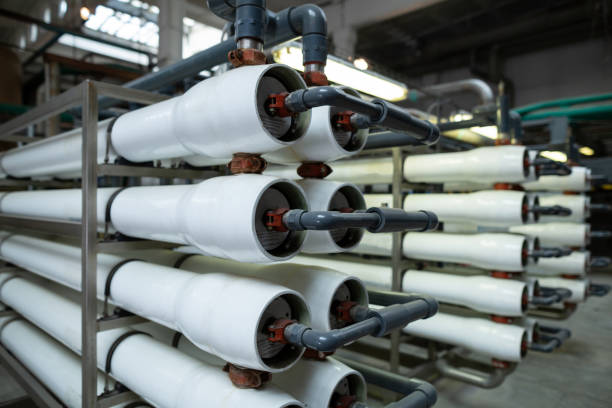
Final Words
Nanofiltration, as a modern membrane separation technology, holds significant value in the field of water treatment. It achieves partial desalination, impurity removal and water hardness improvement through physical interception and electrostatic repulsion. Nanofiltration is applicable to various scenarios such as drinking water and industrial water. However, in high-hardness water environments, it is recommended to combine it with softening pretreatment to ensure the stable operation of the system.
Overall, nanofiltration offers a solution that balances energy conservation and water quality improvement, providing users with a balanced choice among safety, health and economy.
Molewater has been committed to providing customers with efficient and reliable water treatment systems for many years. Welcome to contact us.
